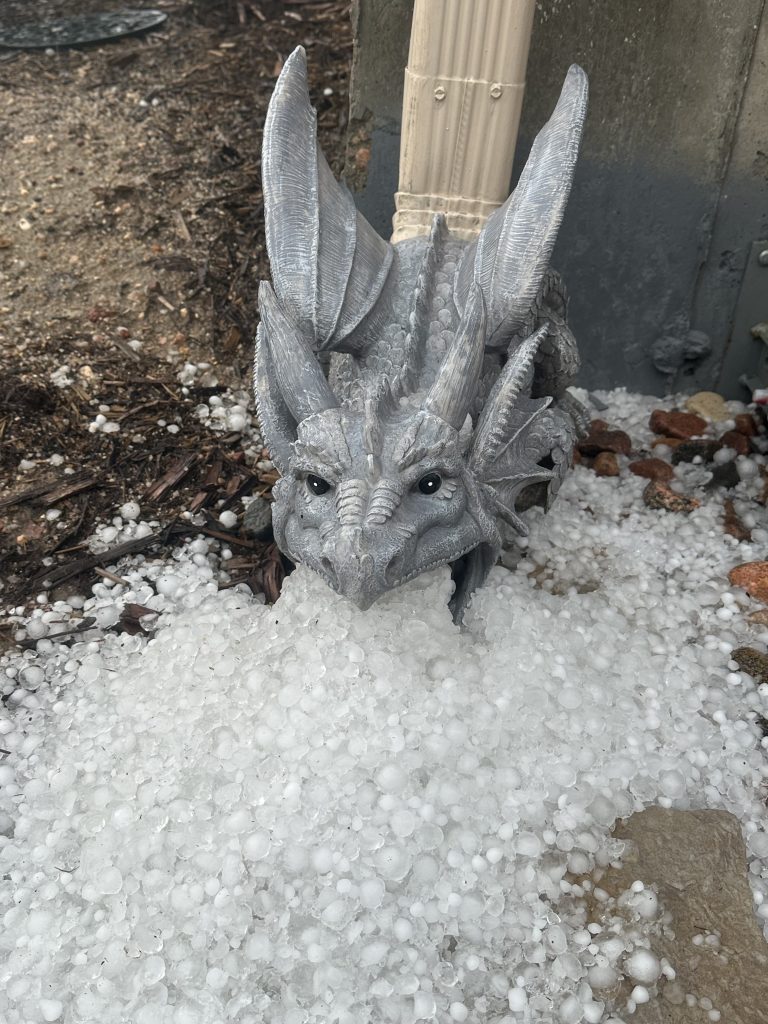By Bill Kappel
November was one for the record books in terms of snowfall, and the good news is that the above average snowfall occurred over both mountains and plains regions. High temperatures were well below normal for the month, while low temperatures were right at normal. There were no significant Arctic air outbreaks, but instead plenty of snow on the ground helped to keep things relatively cool.
Of course, this was quite a change after our record warm October, but this is what makes living on the Palmer Divide so much fun. The weather is never the same for very long, and we get to experience all the seasons during the year, sometimes on the same day.
The additional good news was that the mountains also received copious amounts of snow, with many locations receiving 50-100 inches during November. This got us off to a great start to the snow season in the high country that we will hopefully continue to build on into spring.
The month started the same as October ended, with dry and mild conditions on the 1st and 2nd. But of course, that was about to change in a big way. The first sign of change was associated with moisture that moved in during the evening of the 3rd. There was no strong cold front with this, but instead upslope flow and moisture combined to produce 1-3 inches of snowfall from the evening of the 3rd through the morning of the 4th. But this was just the “primer” for a historic storm that was developing over the Four Corners region.
The 5th started off quietly as an area of low pressure, which was cut off from the main steering current, was slowly moving through the Four Corners region. At the same time, colder air was filtering south over eastern Colorado. The final ingredient which made this storm unique was the low-level wind flow around an area of high pressure to our northeast and the low developing event over the Four Corners. This allowed the low-level wind field to tap into moisture from the Gulf of Mexico. All the ingredients came together perfectly over the region: a slow-moving area of low pressure producing upslope flow and upper-level divergence, slow movement of the low pressure systems, cold air, and deep moisture throughout all levels of the atmosphere.
Snow began to develop during the late afternoon and early evening hours, with 4-6 inches accumulating before midnight. This initial burst of heavy snow continued into the early afternoon hours of the 6th, with another 6-12 inches accumulating. The heaviest snow took a break for the next 24 hours or so with only 3-6 inches of new snow accumulating.
However, the storm wasn’t finished. Heavy snow picked up again during the morning hours of 8th. This continued through the early morning hours of the 9th. During the period, another 8-16 inches of snow fell. Overall, the Palmer Divide picked up 24-36 inches of snow, but areas just to our northeast in Elbert County received over 40 inches and areas along the Colorado and New Mexico border picked up nearly 60 inches. Definitely a great way to start the snow season.
There is an excellent writeup on this storm from both the Denver and Pueblo National Weather Service offices if you would like to dig deeper in the details: https://www.weather.gov/pub/November2024WinterStorm and https://www.weather.gov/bou/HistoricSnowfallNovember2024
Once this storm departed, things quieted down for the next two weeks with dry conditions. Temperatures fluctuated between below and above normal levels. The coolest temperatures were on the 19th and 20th, quickly followed by well above normal temperatures on the 22nd and 23rd. But these warmer temperatures were ahead of the final storm system of the month. This change was first noticed with light snow during the morning of the 25th, then a stronger push of cold air and moisture on the 27th, when 2-5 inches of snow fell. The month ended with lots of sunshine and relatively cold temperatures.
A look ahead
December can be cold around the region, with daytime highs often staying below freezing and overnight lows that can drop well below zero. But, as noted previously, we can experience a wide variety of weather, with westerly winds producing mild conditions. The month is generally dry but with several light, fluffy snowfalls. Gusty winds are also a common nuisance during the month, especially west of I-25. The chance for a White Christmas is common for the area, with most areas having some snow on the ground, and if we are lucky, fresh snow fall on Christmas Eve or Christmas Day.
November Weather Statistics
Average High 46.4° (-3.0°); 100-year return frequency value max 55.5° min 38.5°
Average Low 22.3° (+0.9°); 100-year return frequency value max 27.5° min 14.1°
Monthly Precipitation 3.03” (+2.43”); 100-year return frequency value max 3.80” min 0.16”
Monthly Snowfall 42.3” (+31.5”)
Highest Temperature 64° on the 23rd
Lowest Temperature 8° on the 29th
Season to Date Snow 45.5” (+12.3”) (the snow season is from Oct 1 to Sept 30)
Season to Date Precip. 27.48” (+6.41”) (the precipitation season, Jan 1 to Dec 31)
Heating Degree Days 984
Cooling Degree Days 0
Bill Kappel is a meteorologist and Tri-Lakes resident. He can be reached at billkappel@ocn.me.
Other Weather articles
- November Weather Wrap (12/5/2024)
- October Weather Wrap (11/2/2024)
- September Weather Wrap (10/5/2024)
- August Weather Wrap (9/7/2024)
- July Weather Wrap (8/3/2024)
- June Weather Wrap (7/6/2024)
- May Weather Wrap (6/1/2024)
- April Weather Wrap (5/4/2024)
- March Weather Wrap (4/6/2024)
- February Weather Wrap (3/2/2024)
- January Weather Wrap (2/3/2024)



